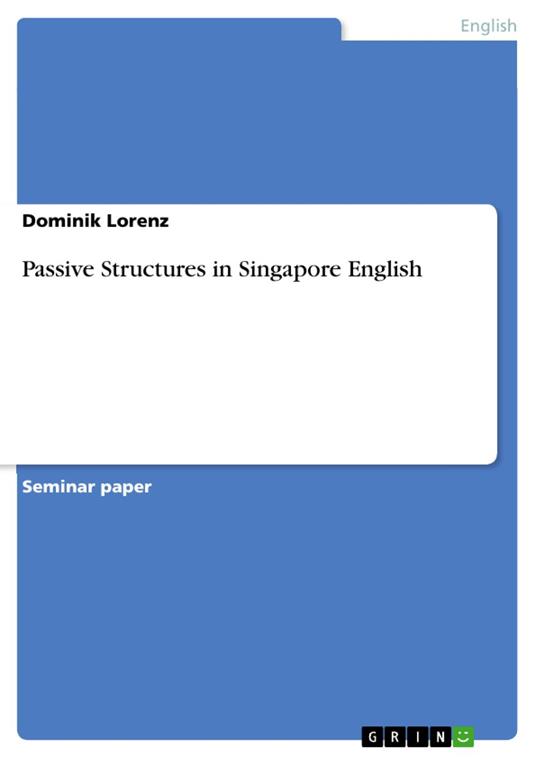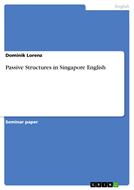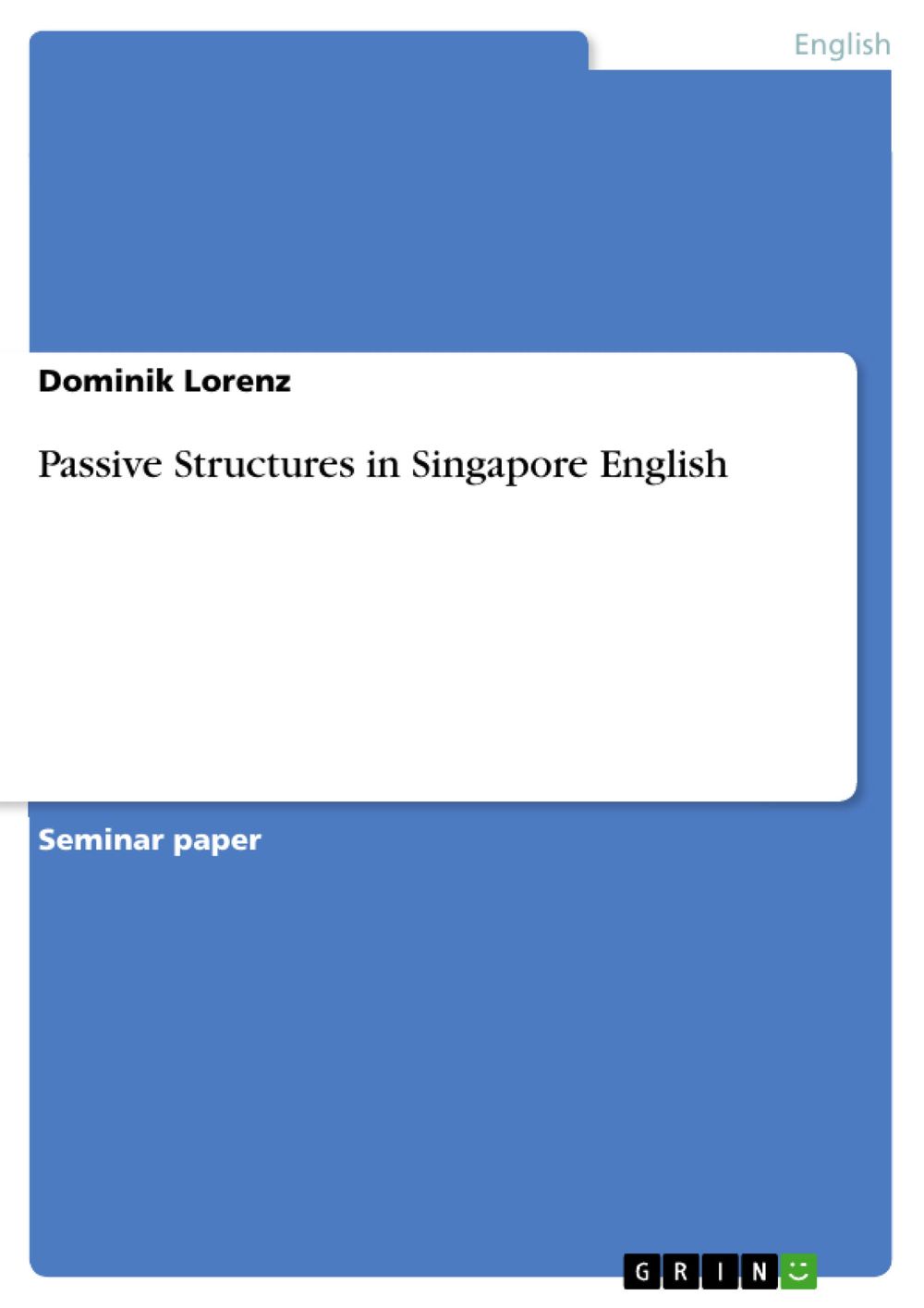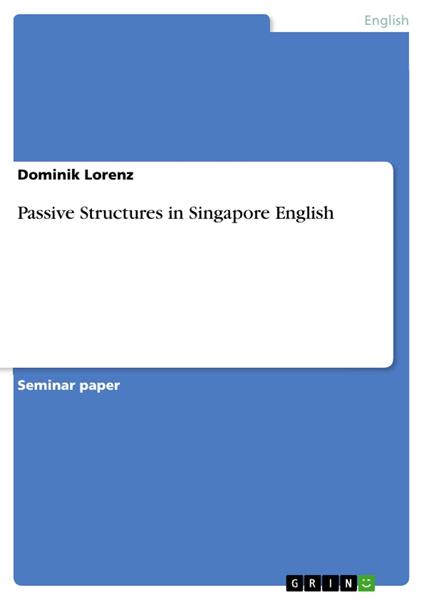Passive Structures in Singapore English
Seminar paper from the year 2006 in the subject American Studies - Linguistics, grade: 2, University of Freiburg, course: Proseminar I, language: English, abstract: Ho and Platt (1993:1) argue that Singaporean English is a particularly interesting indigenized, or nativized, speech variety because it is so widely used and fills so many functions. I can confirm Ho and Platt’s statement, since I was in Singapore in 2004. It was not difficult to notice Singapore English as a speech variety. This sparked my interest in participating in the proseminar ‘English in Singapore’ and consequently in researching into a certain grammatical phenomenon in Singapore English, namely the passive voice. In this term paper, a short analysis of the two passive structures specific to Colloquial Singapore English (the so-called kena passive and the give passive) will be presented. Further on, we the get passive will be examined. We will show that give- and kena-constructions are derived from the languages of Chinese and Malay, respectively. The bigger part of this paper will be to examine the overall frequencies thereof. Which of the two passive constructions will be closer in structure to the standard form? A personal analysis will help us to answer this question, always with the hidden desire to finally come up with a reasonable conclusion towards the end of the paper. We will probably have a winner of the competing substrate form and we will hopefully find out which passive construction is the most productive one in Singapore English. Moreover, we want to compare the frequency of the kena-passive with the getpassive’s frequency in a corpus-based analysis. Admittedly, the corpus-based study will be relatively restrictive and not quite large in size. In addition, the give-passive will be ignored due to its rarity. Further on, we want to compare passive voice in Singapore with the passive in Standard English. To manage this, after having presented the development of Singapore, its multilingualism and English as its most common language, we will define some basic terms, which will be used in this term paper. After that, we will explain the corpus and the methodology used. In the end, we will sum up the findings and we will discuss my own study. Perhaps, there are possibilities how to do it better next time or there are other things that could be done.
-
Autore:
-
Anno edizione:2007
-
Editore:
-
Formato:
-
Lingua:Inglese
Formato:
Gli eBook venduti da Feltrinelli.it sono in formato ePub e possono essere protetti da Adobe DRM. In caso di download di un file protetto da DRM si otterrà un file in formato .acs, (Adobe Content Server Message), che dovrà essere aperto tramite Adobe Digital Editions e autorizzato tramite un account Adobe, prima di poter essere letto su pc o trasferito su dispositivi compatibili.
Cloud:
Gli eBook venduti da Feltrinelli.it sono sincronizzati automaticamente su tutti i client di lettura Kobo successivamente all’acquisto. Grazie al Cloud Kobo i progressi di lettura, le note, le evidenziazioni vengono salvati e sincronizzati automaticamente su tutti i dispositivi e le APP di lettura Kobo utilizzati per la lettura.
Clicca qui per sapere come scaricare gli ebook utilizzando un pc con sistema operativo Windows



